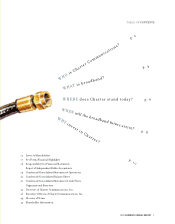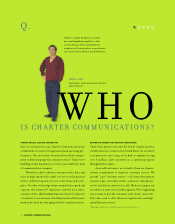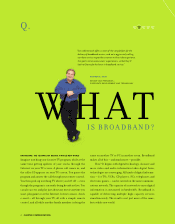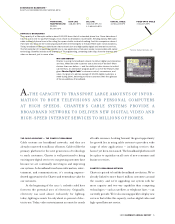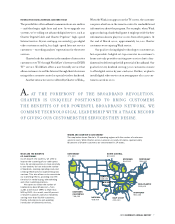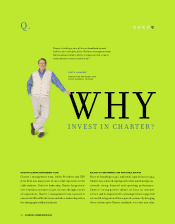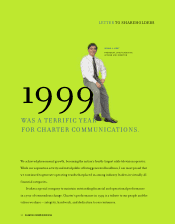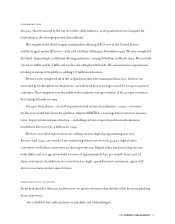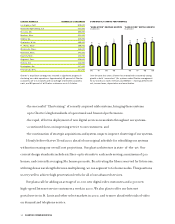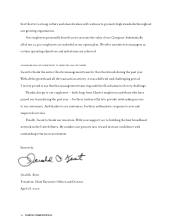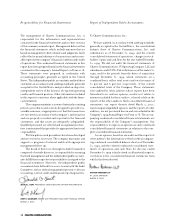Charter 1999 Annual Report Download - page 10
Download and view the complete annual report
Please find page 10 of the 1999 Charter annual report below. You can navigate through the pages in the report by either clicking on the pages listed below, or by using the keyword search tool below to find specific information within the annual report.
8CHARTER COMMUNICATIONS
“As we install thousands of miles of fiber-optic cable; we’re
upgrading every aspect of our broadband network to deliver
greater bandwidth and improved reliability. Our system
architecture anticipates the delivery of the next generations
of products and services.”
Q. WWWWW
JOHN C. PIETRI
SENIOR VICE PRESIDENT —
ENGINEERING
BUILDING A NETWORK FOR THE 21ST CENTURY
We are upgrading our cable systems with sufficient band-
width and two-way capability to provide services such
as digital video, high-speed Internet service, telephone
service, other interactive services and additional services
that have yet to be developed. We’re upgrading our system
to provide bandwidth that exceeds the industry standard.
The upgrade represents a $3.1 billion investment over
three years, beginning in January 2000. This year alone,
we will rebuild 40,000 miles of our 180,000 miles
Company wide.
By 2003, 92 percent of Charter’s customers will be
served by systems consisting of fiber-optic and coaxial
cable with bandwidth of 750 megahertz or greater. Our 150
largest systems will have bandwidth of 750 to 870 megahertz
and two-way interactive capability. We’re upgrading all
aspects of our systems to handle this increased bandwidth.
Our headends are connected to nodes by fiber-optic cable.
From nodes, individual homes and businesses are then
connected by coaxial cable. Our system architecture incor-
porates a maximum node size of 500 homes, and currently
averages approximately 380 homes. By limiting the number
of homes on each node, we improve picture quality and
overall reliability. We are also installing six strands of fiber-
optic cable to each node, with two strands activated and four
strands available for future use.
WHEN
WILL THE BROADBAND
FUTURE ARRIVE?



